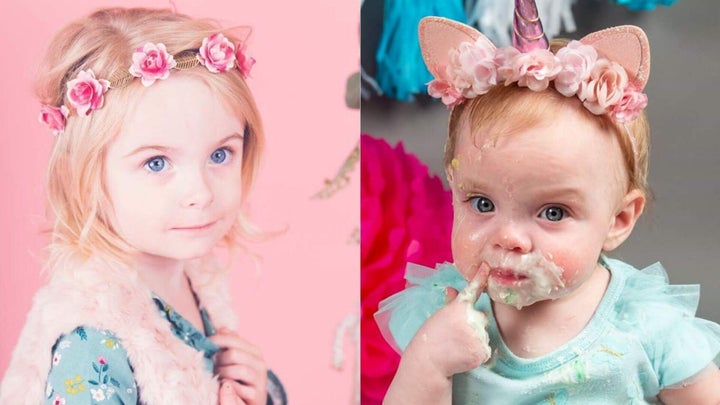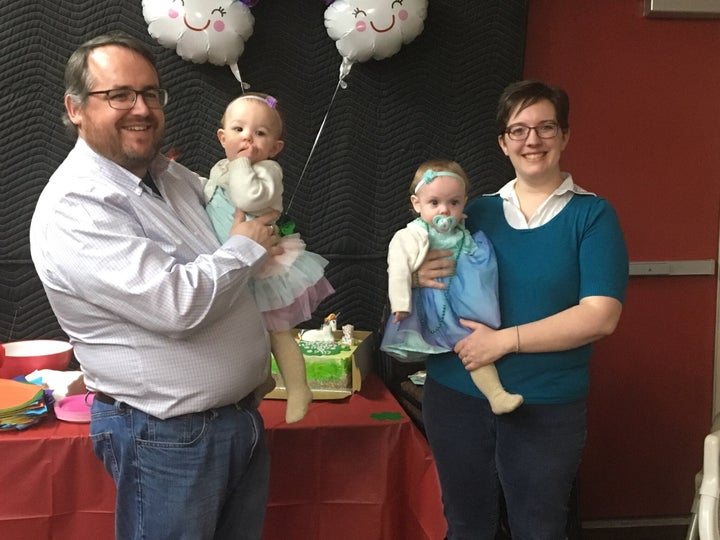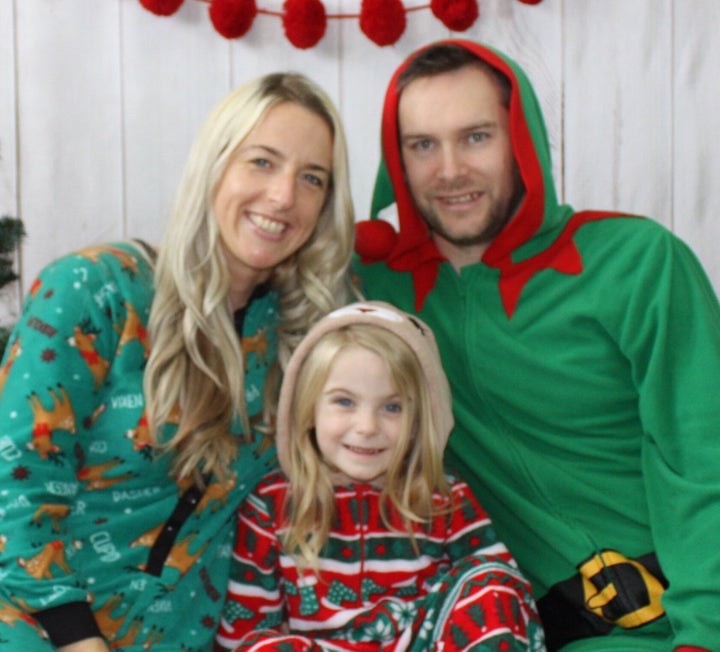
Parenthood, especially when your kids are young, can be incredibly isolating. So, Danielle Weil, who has 14-month-old twins, is grateful to have a dear friend with a child who lives just two blocks away.
But playdates are completely out of the question.
“Our kids can never meet,” Weil, who lives in Brantford, Ont., told HuffPost Canada.
One of Weil’s twin daughters, Emme, was born with cystic fibrosis (CF). The fatal, genetic disease is characterized by a buildup of mucous that affects the digestive system and lungs. There is no cure. A recent study found that the median age of survival for Canadians with CF is around 50 years old.
Even though it’s estimated that only one in 3,600 babies born in Canada has CF, just a few streets over, Weil’s good friend Abbey Ball’s daughter Hope, age 4, also has the disease.

The two children can never be in the same room at the same time, since they could spread a lung-deteriorating bacteria to each other, which is a potentially deadly but little-known effect of CF known as cross infection.
It’s “difficult or impossible” to get rid certain types of lung bacteria once a person with CF is infected with it, and lung infections are a leading cause of death in people with CF, Cystic Fibrosis Canada (CFC) notes.
So, people with the disease should always stay at least six feet away from each other. Only one person with CF should ever been in a room.
“It is a lonely world,” Ball, also of Brantford, Ont., told HuffPost Canada.
“In 10 or 11 years, when Hope really starts to understand this disease, she is literally going to have nobody, unless it’s social media, to express her anger, to express her emotions.”
For parents of kids with CF, the six-feet-apart rule means no playdates with other parents they might meet in online support groups. For kids with CF, this means no in-person support from others with the disease at all.
“It’s a very isolating disease,” said Weil.
CF is far from an ‘invisible disease’ for caregivers
Thanks to awareness campaigns, activists like Claire Wineland, and pop-culture depictions such as the teen movie, “Five Feet Apart,” most people by now have heard of cystic fibrosis.
But, while a general understanding of the disease and its signature, persistent cough exists, there is less awareness of what it’s actually like to care for someone with the “invisible disease.”
WATCH: Man with CF thanks his mom by taking her on a trip. Story continues below.
Most people living with CF actually appear fairly healthy, CFC notes, but the daily struggles to stay that way make it anything but invisible for those with the disease, and for their caregivers.
Some kids with CF require hours of daily respiratory therapies, including chest percussion to break up the sticky mucous, inhalers, and nebulizers. Many take enzymes with every meal to help them better digest their food.
An intense daily routine
Sasha Haughian’s typical morning routine with her kids takes two to three hours, she told HuffPost Canada. There are puffers, inhaled medications, chest physiotherapy, and then more inhaled medications afterward, she explained.
On top of that, she can’t just give her kids a banana for breakfast on the way out the door. People with CF need anywhere from 10-to-50 per cent more daily calories than people without the disease, so every meal is major.
“It’s almost like I’m not a person. I’m just this robotic thing taking care of my kids and making sure they’re getting everything they need,” said Haughian, who has two sons with CF and one daughter without.
But every day when she watches Andre, 8, and Joshua, 6, walk to school, she feels so proud of what they just went through in order to do something so many other kids and their parents take for granted.

“I would love people to know, you know, when we’re outdoing normal things, when the boys are playing their sports, and when they get to school in the morning, I wish their teachers and coaches know what they just did in order to get there,” said Haughian who lives in Tottenham, Ont.
Having two kids with CF in the same family means Haughian has no choice but to break the six-feet-apart rule. Instead, she keeps their belongings separated and cleans constantly to try to avoid cross infection.
But, she worries about it in the back of her mind.
Working isn’t always an option for parents of CF kids
Haughian doesn’t work outside the house. She stays home with her youngest child, Lucy, who is two years old and doesn’t have CF. This is partially to avoid her bringing germs home from daycare and infecting her sons.
She also stays home because of how often her boys are sick and can’t go to school.
“If I had a job, I’d be fired,” Haughian said with a laugh.
Weil resigned from her job in the wake of Emme’s diagnosis for similar reasons. It’s too much of a challenge to keep her healthy in a daycare setting when even just a common cold can quickly turn to pneumonia.
“I’m not going to take that risk with her right now,” Weil said.
The vast majority of caregivers for people with rare diseases say their family finances have taken a hit, according to a recent Canadian study. Three out of four are socially isolated.
It’s important to connect
After Ball and Weil meet up— something they do often, as they are quite close — Ball will change her clothes, bathe, and wash her hands before coming in contact with Hope in case any of Emme’s bacteria has clung to her.
“So it’s not even a normal relationship to have with these other parents,” Ball said.

At the same time, it’s important to connect with other parents of kids with CF, she added, and not just for the emotional support.
“It is important for us as moms to know everyone we possibly can in the community that has CF so we can avoid them in public,” Ball said.
“I’ve ran out of buildings before with Hope, knowing another child with CF is in there.”
There are great online support groups for parents of kids with CF, but Weil has found that “there’s definitely been a lot of distance” from her friends and other parents of kids without the disease.
“A lot of us have kids around the same age, but they just don’t know what to say,” Weil said.
“People need to know we want you to ask questions. We want to be able to share and spread awareness.”
Also on HuffPost: